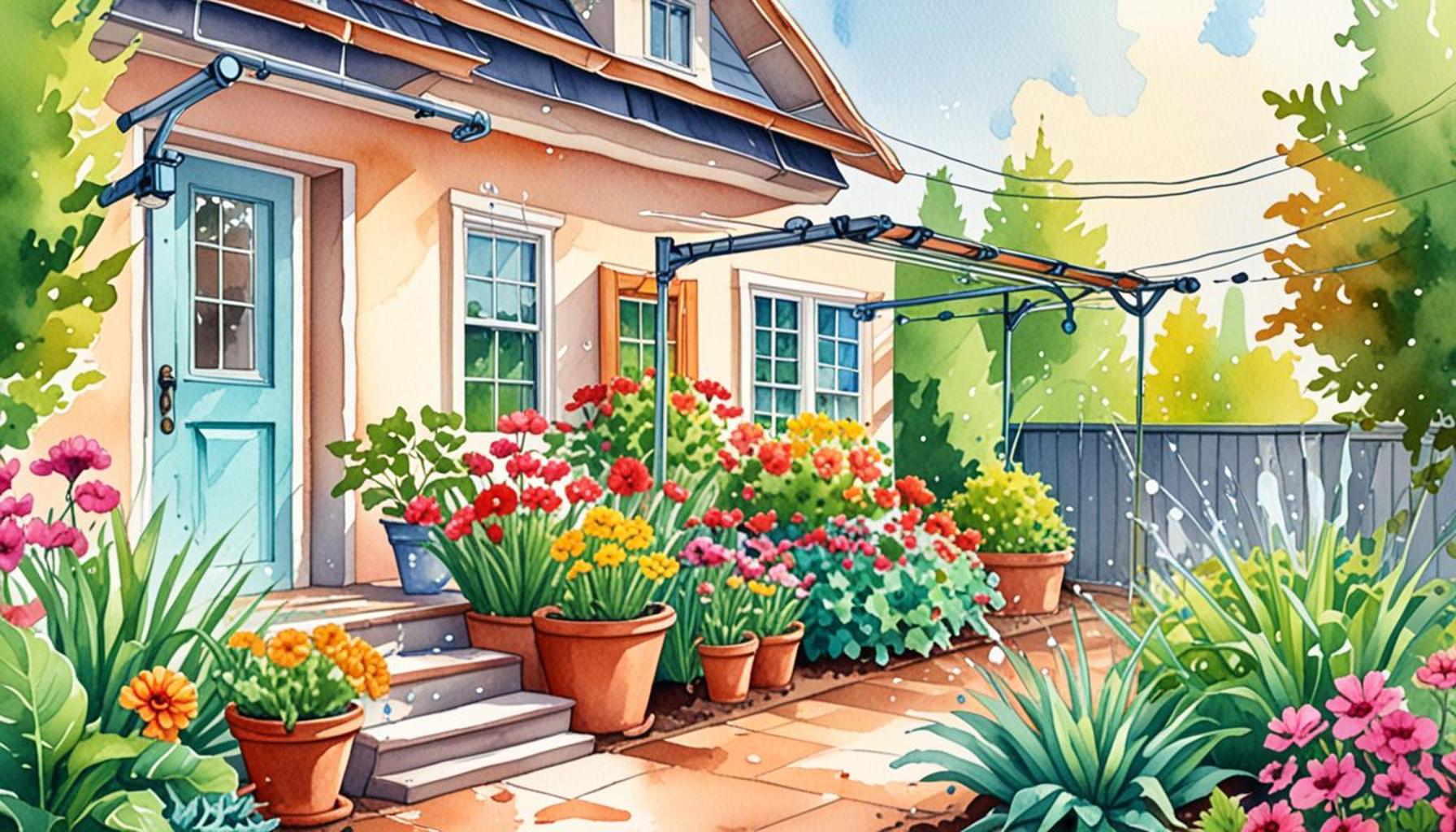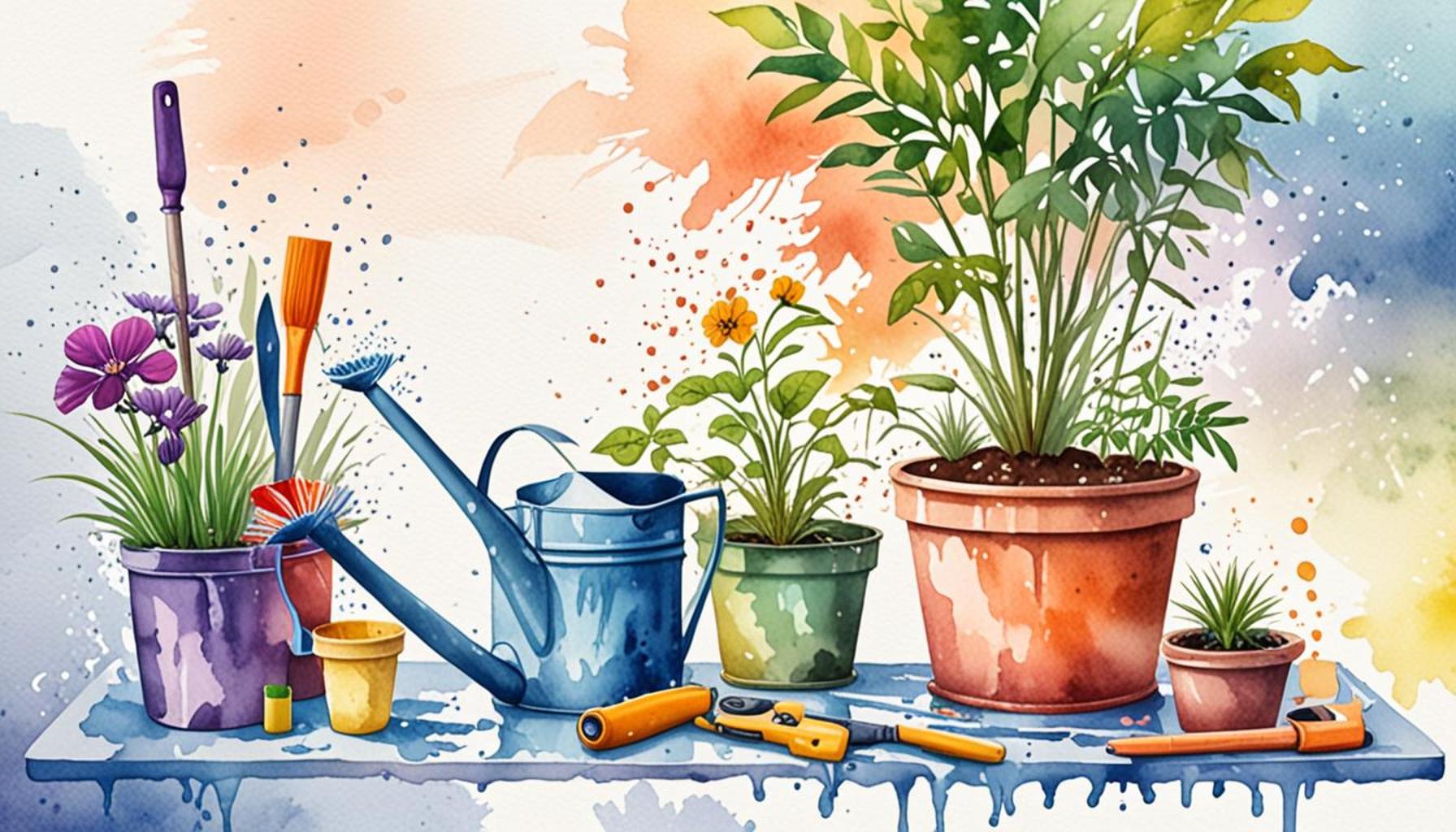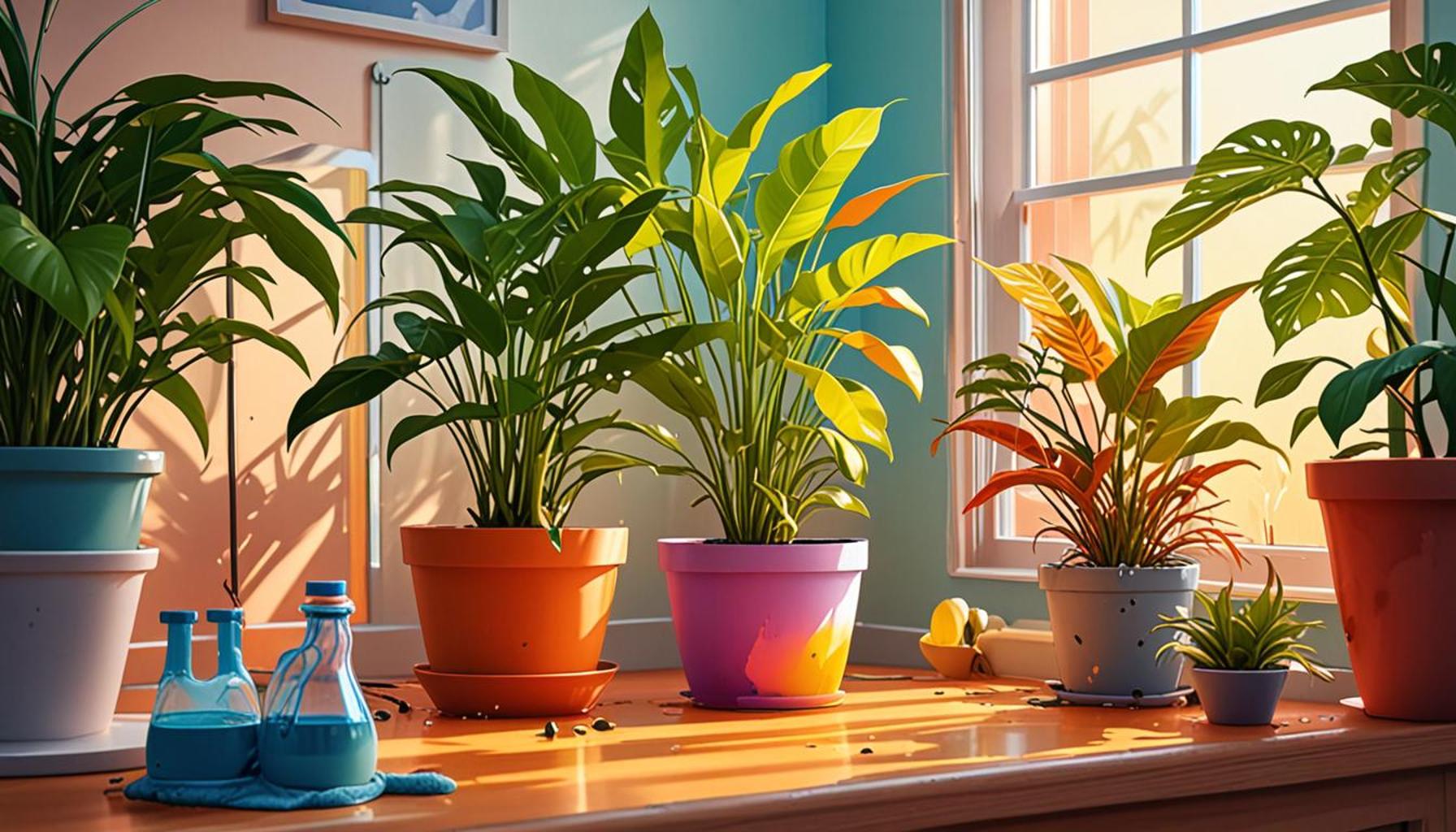Sustainable Irrigation Tips: Saving Water While Caring for Your Garden
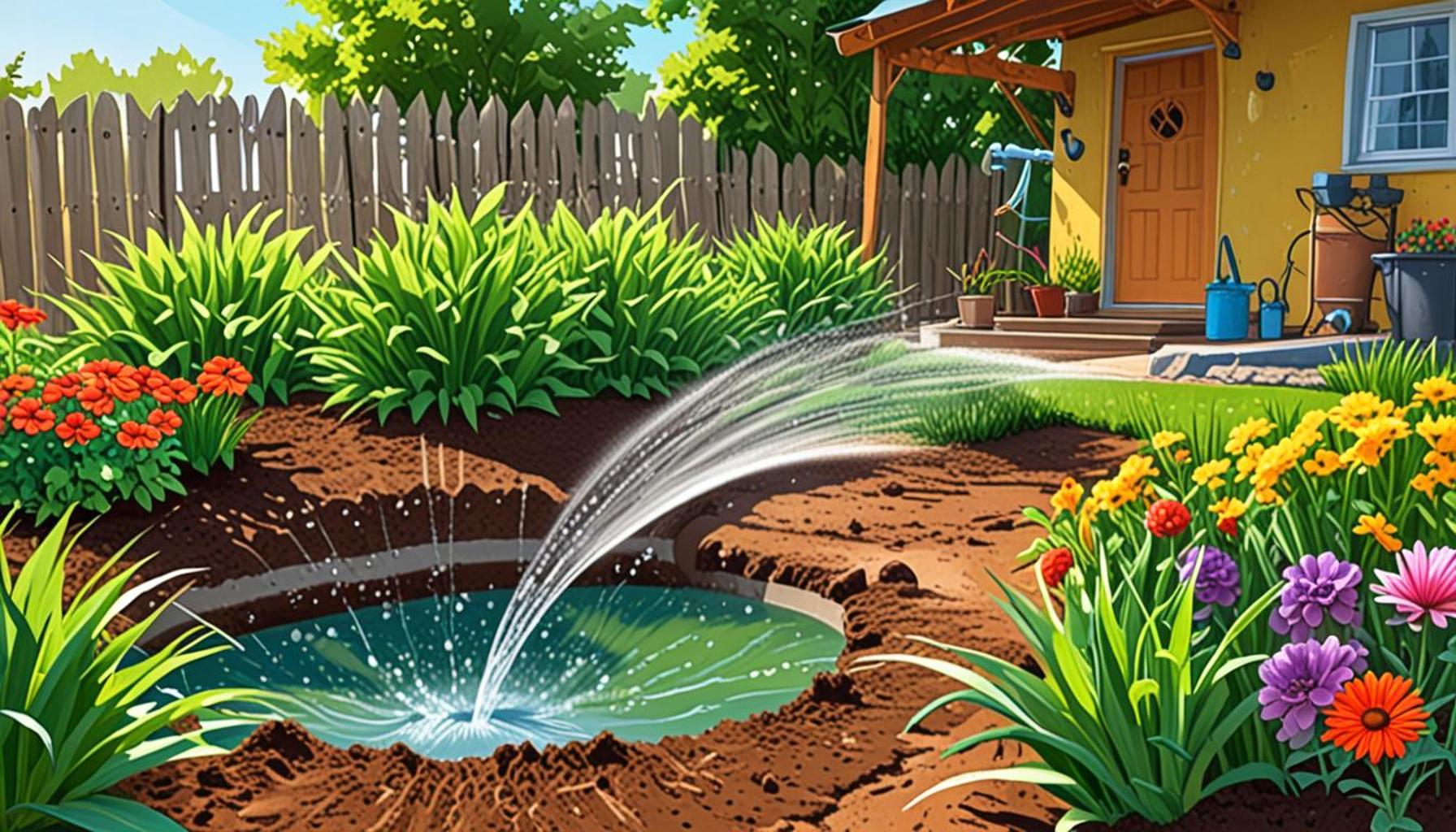
Understanding Water Conservation in Gardening
Water is an essential resource for nurturing gardens, yet the growing concern about its scarcity prompts us to rethink our irrigation practices. With smart strategies, it’s possible to maintain a flourishing garden while minimizing water usage. Here are some key points to consider:
- Efficiency is key: Utilizing efficient irrigation techniques not only conserves water but also enhances plant health. Techniques like drip irrigation deliver water directly to the root zone, ensuring that plants receive moisture where it’s needed the most. This method greatly reduces evaporation and runoff, making it a smart choice for environmentally conscious gardeners.
- Awareness of soil health: Understanding your garden’s soil type can drastically improve water retention and reduce waste. For instance, sandy soils drain quickly, requiring more frequent watering, while clay soils retain moisture but can become compacted. By enhancing soil structure through composting or mulching, you can improve its ability to hold water, thus reducing the overall need for irrigation.
- Timing matters: Watering at the right time of day can lead to significant water savings. Early morning or late afternoon is ideal, as cooler temperatures reduce evaporation losses. For example, watering in the heat of the day can waste up to 30% of water due to evaporation.
As gardeners in the United States face varying climate challenges—from severe droughts in California to heavy rains in the Midwest—implementing sustainable irrigation practices becomes increasingly relevant. Not only do these practices benefit your plants, but they also contribute to broader water conservation efforts, helping to protect local ecosystems and wildlife.
This guide will explore practical sustainable irrigation tips that allow you to care for your garden responsibly. Investing in rain barrels can capture and store rainwater, offering an additional water source. Moreover, using mulch can help retain moisture in the soil, reducing the need for frequent watering.
You will discover innovative methods, useful tools, and simple adjustments, such as checking for leaks in hoses and irrigation systems, that can make a big difference in your water usage. Incorporating native plants into your garden is another excellent strategy; these plants are often drought-resistant and well-suited to local climate conditions.
Join us as we delve into the world of sustainable gardening and uncover the benefits of smart water management! By adopting these techniques, you will not only save water but also create a more resilient and vibrant garden.
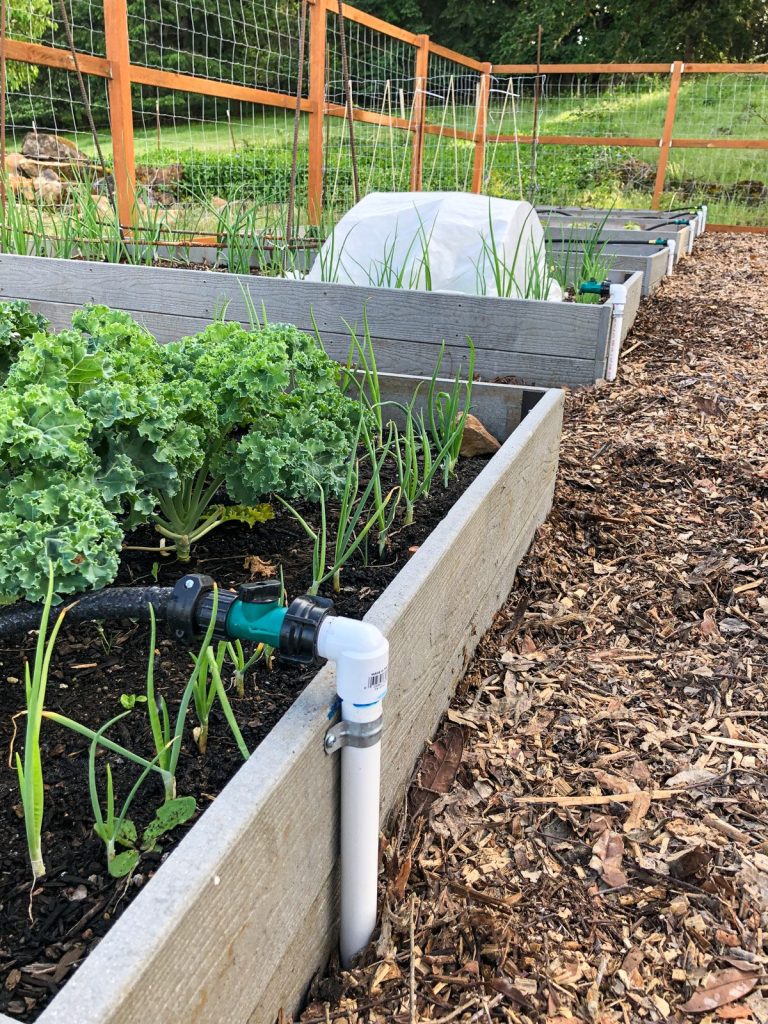
DON’T MISS: Click here to enhance your planting success
Essential Sustainable Irrigation Techniques
As more gardeners embrace the concept of sustainability, it’s vital to explore practical methods that not only conserve water but also enhance plant vitality. Implementing sustainable irrigation techniques can lead to significant savings on your water bill while fostering a healthy garden environment. Here are some essential strategies to consider:
- Implementing Smart Water Scheduling: One of the most effective methods of reducing water usage is establishing a watering schedule tailored to your plants’ needs. Research indicates that the average garden requires less water during cooler months or when plants are dormant. Utilize moisture meters to identify when the soil is dry enough to require watering, ensuring you only irrigate when absolutely necessary.
- Utilizing Native Plants: Incorporating native plants into your landscape can significantly lower the amount of water required. These species are adapted to local conditions, making them resilient to periods of drought. For example, the California poppy thrives in arid conditions and requires minimal irrigation once established. Research local native plant nurseries to discover options that suit your garden’s ecosystem.
- Employing Greywater Systems: Collecting and utilizing greywater—wastewater from baths, sinks, and washing machines—is another sustainable approach. Installing a greywater system allows you to reuse this water for irrigation without compromising plant health, as long as non-toxic soaps and detergents are used. This can dramatically reduce reliance on municipal water sources.
In regions like the Southwest United States, where water scarcity is a pressing issue, these techniques can be especially beneficial. As many communities grapple with drought conditions, understanding how to use resources efficiently becomes critical. For instance, adopting a rain garden can not only manage runoff but also collect and retain rainfall for future use.
Rain barrels are another excellent tool for promoting sustainable irrigation. By capturing rainwater from rooftops, homeowners can store this resource for later use, effectively decreasing reliance on conventional water sources. According to the American Rainwater Catchment Systems Association, an average-sized roof can generate over 600 gallons of rainwater during a single rainstorm. This can cover a significant portion of your garden’s watering needs throughout the summer months.
Creating a drip irrigation system further enhances water efficiency. Unlike traditional sprinklers that may waste water through evaporation or overspray, drip systems distribute water directly to the soil at the base of each plant. This ensures that your garden receives adequate moisture while minimizing waste, an essential factor for responsible gardening in water-sensitive areas.
As we recognize the importance of conserving water, the adoption of these techniques not only fosters flourishing gardens but also supports the broader mission of environmental stewardship. By combining smart scheduling, native plant selection, greywater use, rain barrels, and drip irrigation, gardeners can cultivate landscapes that are vibrant and resilient while contributing to sustainable practices.
| Tip Category | Details |
|---|---|
| Drip Irrigation Systems | These systems minimize water wastage by delivering moisture directly to the roots. |
| Rainwater Harvesting | Collecting rainwater can significantly reduce your water bill and is an eco-friendly solution. |
| Mulching | Applying mulch helps retain soil moisture, reducing the need for frequent watering. |
| Native Plants | Choosing drought-resistant plants ensures you use less water while maintaining a beautiful garden. |
Effective irrigation strategies are pivotal in not only maintaining a vibrant garden but also conserving water resources. With climate challenges on the rise, implementing these sustainable practices is not merely an option, but a necessity for responsible gardening. Incorporating a drip irrigation system can create a targeted watering approach, thus enhancing water efficiency while promoting plant health. Moreover, employing a rainwater harvesting system is a smart way to collect and utilize nature’s bounty, driving sustainability at its core. Mulching, often overlooked, presents an easy yet powerful method to safeguard moisture in the soil, thereby optimizing water usage.By selecting native plants suited to your region, gardeners can create an eco-friendly oasis that flourishes with less water – a win for the environment! Explore these techniques further, and transform your garden into a sustainable haven while conserving precious water!
LEARN MORE: Click here for tips on creating healthy soil with composting
Advanced Techniques for Water Conservation
As gardeners continue to prioritize sustainability, exploring advanced irrigation techniques can further optimize their water use while enhancing garden health. These methods can require an initial investment but often pay off in long-term savings and ecological benefits. Here are several innovative strategies to consider:
- Mulching for Moisture Retention: Applying a layer of organic mulch, such as wood chips, straw, or grass clippings, around your plants serves two essential functions: it helps retain soil moisture and suppresses weed growth. According to the USDA, mulching can reduce evaporation from the soil by 30% to 50%. This practice not only conserves water but also enriches the soil as the organic matter breaks down over time.
- Soil Health Improvement: Implementing practices that improve soil health, such as composting, can dramatically affect water retention. Healthy soil structure enhances its ability to absorb and retain water, reducing the frequency of watering needed. It’s estimated that healthy soils can hold 20% to 40% more water compared to degraded ones. Regularly incorporating organic matter into your soil increases its fertility and moisture content.
- Rain Gardens and Permeable Surfaces: Integrating a rain garden into your landscape design can manage stormwater effectively while providing natural irrigation. By planting in a shallow depression, homeowners can capture and utilize runoff from patios, driveways, and roofs. This method not only promotes garden resilience but also enhances biodiversity by attracting beneficial wildlife.
- Smart Irrigation Controllers: Investing in smart irrigation controllers can revolutionize your watering habits. These sophisticated devices can automatically adjust watering schedules based on real-time weather data, soil moisture levels, and even plant type. Research indicates that using smart irrigation technology can reduce water usage by up to 50%. Popular brands like Rachio and RainMachine have garnered acclaim for their efficiency and user-friendly interfaces.
Incorporating permaculture principles into your gardening practices can further enhance sustainability. This approach designs gardens to mimic natural ecosystems, often enhancing water retention through strategic plant placement and companion planting. For instance, planting taller plants that provide shade can lower soil temperature and reduce evaporation rates, making it easier for neighboring plants to thrive with less water.
Moreover, using wetland plants in garden beds can be advantageous in managing excess water while requiring less irrigation. These plants, such as certain sedges and grasses, thrive in moist conditions and help to filter and retain water in the landscape, creating a self-sustaining mini-ecosystem. They not only benefit your garden’s irrigation needs but also support local wildlife by offering habitat and food sources.
Furthermore, education plays a key role in sustainable gardening practices. Engaging with local gardening workshops or community efforts focused on water conservation can foster knowledge and skills beneficial for enhancing garden sustainability. Networking with local horticulturalists can also provide insights on regional specifics, ensuring your irrigation methods align with local climate conditions and water regulations, especially in arid areas of the United States.
By exploring these advanced techniques, gardeners can strike a delicate balance between nurturing their plants and conserving precious water resources, creating thriving gardens that exemplify sustainable living while addressing the complexities of climate change and water scarcity.
DISCOVER MORE: Click here to start your gardening journey
Conclusion: A Greener Future Awaits
In a world increasingly aware of the need for sustainable gardening practices, adopting efficient irrigation methods is crucial not just for conserving water but also for nurturing thriving gardens. By implementing techniques such as mulching, improving soil health, and utilizing smart irrigation controllers, gardeners can effectively reduce their water consumption while enhancing the vitality of their plants. Furthermore, the incorporation of rain gardens and native wetland plants can create beautiful, eco-friendly landscapes that provide essential habitat for wildlife, showcasing how sustainable practices can benefit both nature and the gardener.
As we face challenges posed by climate change and water scarcity, it’s imperative that gardeners leverage their roles as stewards of the environment. Engaging in continuous education and community efforts will not only enhance our understanding of water management but also encourage a culture of responsibility towards our shared resources. By staying informed about innovative practices and local conditions, gardeners in the United States and beyond can make a lasting impact.
Through the adoption of these sustainable irrigation tips, we can all contribute to a greener future, ensuring that our gardens flourish even in challenging conditions. So, step into your garden with renewed purpose, and let your commitment to sustainability blossom alongside your plants.

